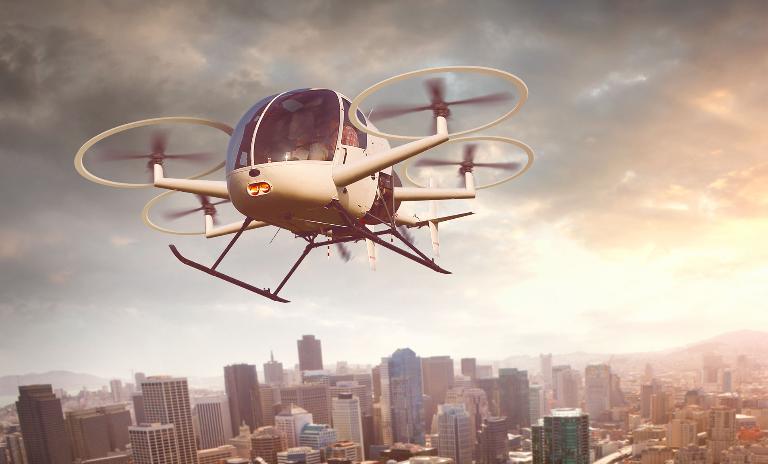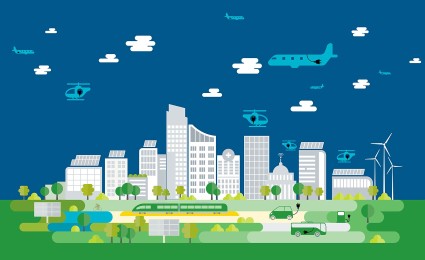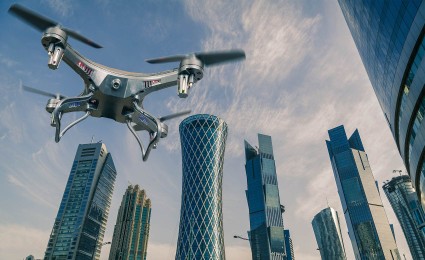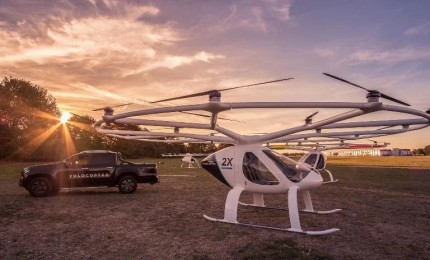

Passenger drones: First ipo seen in two to three years
How European and Chinese companies differ in their approach to Urban Air Mobility
The Urban Air Mobility (UAM) market is evolving rapidly thanks to technological advancements, with commercial services for passenger drones deemed just a few years away. As more companies start to mature, investors are setting their sights on the budding sector. The success of the UAM pioneers will depend on various factors, including their business models, which stakeholders are involved and the ability of the companies to secure financing for growth.
Jianwei Li, founder and managing partner of Zhen Cheng Capital, a leading venture capital firm, closely follows the developments in Urban Air Mobility. In our interview he shares his views on the maturity of the market and its likely evolution, predicting that only a handful of players will survive industry consolidation .

"The Chinese market contains a number of already successful companies within the passenger and cargo drone market, one example being EHang."
What is an investor looking for when investing into UAM?
Early stage Investors are typically evaluating the maturity of the product and the underlying product roadmap. The more mature a product is, the higher the likelihood of an investment. Given the technical advances in the last years, I expect that we will see revenue of leading companies within the field of UAM electrical vertical take-off and landing (eVTOL) drones start to ramp up soon. We may see an initial public offering (IPO) in the field in the next two to three years.
What is the major difference between China and Europe with regards to developing UAM eVTOL?
The main difference is in my point of view that in Europe the focus is on the product, the drone itself, and the companies are optimizing it according to what is technically feasible.
In China I see a more holistic approach where companies focus on the whole ecosystem. EHang, for example, is not only developing and producing the drone, but also the control system needed to operate the drone. More generally, the Chinese UAM eVTOL industry is an offspring of the strong engineering and manufacturing capability of the well-established drone industrial cluster in Shenzhen and Guangzhou.
What is the biggest strength of the Chinese market?
In China we see a lot of companies which are already quite successful in the consumer drone or cargo drone market (e.g. DJI, EHang). Companies developing drones for passenger transport can benefit on the one side from the established supply chains and on the other side from the knowledge about flight control and the set up and operation of drone control centers.
By when do you see commercial services entering the market in China?
This will happen in two to three years from now. Based on my view it will start with first flights for sightseeing as well as for selected routes, e.g. airport transfer, and afterwards it will expand quickly. However, key is to prove that this new mode of transportation is safe and reliable and thus get public acceptance, similar to what we have seen with cars more than 100 years ago.
What will be the business models of the future? Would it be one stakeholder operating the whole system or multiple stakeholders?
There are two basic roles: Operator of drones as well as manufacturers of the infrastructure, such as drones and control system. In some markets both roles will be taken over by one company (e.g. EHang in China) while in other markets these two roles will be split. This depends on the one hand on the regulation in each specific market and on the other hand on the presence of established mobility providers in this market, and their appetite to engage as an operator within the UAM ecosystem.
Finally, how do you see the drone landscapes evolving in the future?
Currently we see more than a dozen concrete projects worldwide for passenger drones and even more startups emerging which have little more than paper concepts to offer. In my perception a lot of projects will die in the next years, either due to the concept, or as financing cannot keep up until the first commercial flights really scale up. The number of players in the end state is in my point of view something around five to seven.
Would you like to know more about how your company can prepare for Urban Air Mobility?
Please don't hesitate to connect with our experts Manfred Hader , Zhanfu Yu and Stephan Baur
Interested in finding out more about exciting developments in the field of electric propulsion? Register here to receive the latest updates delivered straight to your inbox.





